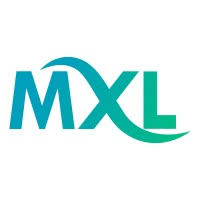
Robinjasper1109
Uploaded on Oct 21, 2025
Embedding ESG Culture: Why Microlearning is Key to Business Sustainability Training Sustainability—encompassing environmental, social, and governance (ESG) factors—is no longer a niche concern; it is a fundamental pillar of modern business strategy. For multinational corporations, from Finance and Banking to Oil and Gas and Pharma, the challenge is immense: how do you train thousands of employees across diverse roles and global locations on complex, evolving sustainability protocols? The answer lies in the agile, highly focused method of microlearning. Microlearning offers the strategic precision needed to take vast, abstract sustainability goals and distill them into actionable, job-specific behaviors, effectively embedding an ESG culture deep within the organization. The Sustainability Challenge: Complexity and Scale Sustainability training is uniquely difficult due to two factors: Scope and Nuance: An employee on a Mining site needs different training (e.g., land reclamation) than an employee in an Insurance sales office (e.g., climate risk in underwriting). A single, monolithic course is irrelevant to most participants. Continuous Change: ESG metrics, government regulations, and best practices evolve constantly, requiring immediate, reliable knowledge updates across the entire workforce. Microlearning solves this by focusing on singular, actionable objectives and enabling just-in-time delivery, making it the most effective framework for this crucial training. Step-by-Step: Building a Sustainable Microlearning Program L&D professionals can utilize the microlearning framework to build a robust, sustainable training initiative that drives real-world change. 1. Deconstruct the ESG Agenda The first step is to break the overall sustainability mission into tiny, digestible Microlearning Courses tailored to specific roles: Finance/Banking: Modules on "Identifying Greenwashing Risks" or "ESG Data Reporting Protocol." Retail: Snippets on "Reducing Packaging Waste at the Point of Sale" or "Ethical Sourcing Compliance Check." Health care/Pharma: Short videos on "Proper Disposal of Bio-Hazardous Materials" or "Sustainable Supply Chain Audits." This level of granularity ensures every employee is trained on only the sustainability behaviors relevant to their job, maximizing engagement and relevance. 2. Empower Rapid Content Creation The pace of sustainability policy requires the ability to create and update content instantly. This necessitates specialized Microlearning Tools: A powerful Microlearning Authoring Tool allows SMEs to quickly transform new regulatory documents into interactive flashcards or short scenario-based quizzes. The cutting-edge AI-powered Authoring Tool is particularly valuable here. It can ingest a lengthy, technical sustainability report and automatically generate draft micro-modules, allowing the L&D team to deploy critical compliance training in a fraction of the time. This speed is vital when new global standards hit the Oil and Gas or Pharma industries. 3. Ensure Ubiquitous Access and Management Sustainability behavior must be reinforced everywhere, all the time. A centralized Microlearning Platform or a dedicated Microlearning LMS provides the essential infrastructure to manage thousands of content snippets. Crucially, the content must be delivered through a mobile-optimized Microlearning Application. This ensures that an employee on a remote Mining site, or a sales team on the road, can access a compliance refresher or safety check the moment before they start a task. 4. Drive Behavioral Change with Intelligence Sustainability success is measured by changed behavior, not just completion rates. Implement an AI-Powered Learning Platform that personalizes the delivery. This system can track an employee’s previous knowledge assessment results and automatically recommend a short, timely micro-module on an area of weakness (e.g., reducing energy waste in a Retail store). By using data from the Microlearning Platforms, L&D can correlate content consumption with business metrics, such as a reduction in water usage, lower waste generation, or an improved ESG rating, proving the tangible ROI of the training. By leveraging the precise, agile power of Microlearning Software and platforms, organizations can effectively overcome the challenges of complexity and scale, transforming abstract sustainability goals into concrete, daily actions performed by every employee. This targeted training approach is the only way to genuinely embed an ESG culture and meet the growing global demand for corporate responsibility.

Comments